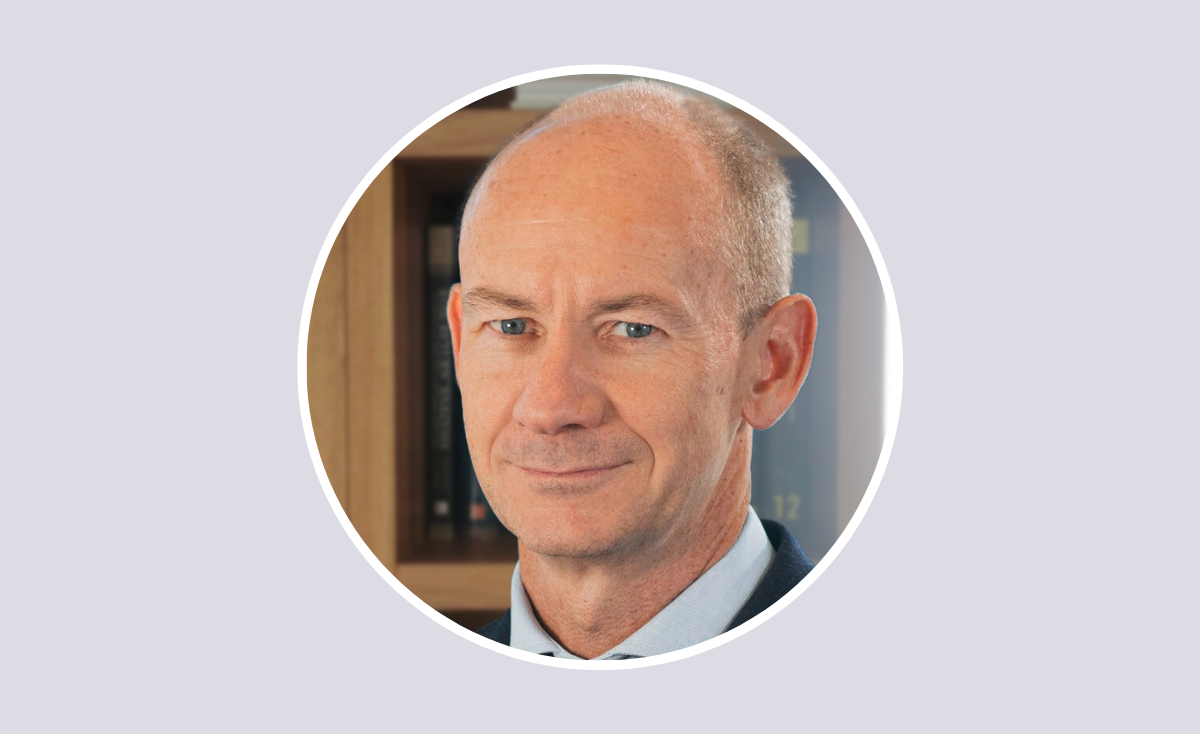What are the operational considerations of being a mission-driven asset manager?
Christophe Lemarie, Chief Operating Officer - Client Experience and Strategy, Executive Committee, TOBAM, discusses the operational considerations for an asset manager that focuses on human rights within its portfolio.
Andrew Putwain POSTED ON 3/25/2024 8:00:00 AM
 Christophe Lemarie, Chief Operating Officer - Client Experience and Strategy, Executive Committee, TOBAM.
Christophe Lemarie, Chief Operating Officer - Client Experience and Strategy, Executive Committee, TOBAM.
Andrew Putwain: Tell us about your background, your role at TOBAM and what it entails, and about the company’s ethos around its operations and investment activities.
Christophe Lemarie: Before joining TOBAM in 2023, I spent more than 25 years in the asset management industry. With a scientific and engineering background, I started on the investment side, managing structured products. I then had the opportunity to lead different activities such as marketing teams, equity and balance portfolio manager teams, and also to head a dedicated asset management company, a subsidiary of Amundi.
"In terms of how these feed into operations, our conviction is that the best way to reach this objective is via automation and fully integrated IT systems."
My first objective is to bring my experience in the asset management business to TOBAM and, while directly managing the operations and client experience teams, contribute to the future growth of the firm.
TOBAM was founded and developed by mathematicians and engineers, and this scientific mindset and rigorous approach has spread across the different activities of the company. In terms of how these feed into operations, our conviction is that the best way to reach this objective is via automation and fully integrated IT systems. We have an in-house IT system, which is fully straight-through processing (STP) and has been developed over the years. It starts with portfolio management tools and also includes reporting, CRM, and finance modules.
Andrew: TOBAM is focused on the human rights sector; can you discuss the challenges and opportunities this brings to the operations sphere? Are there specific issues that arise because of where and how you invest, and, if so, how do you deal with those?
Christophe: We recently launched a strategy named LBRTY, which focuses on reducing as much as possible exposure to non-democratic countries and regimes. It’s a concept that requires a management approach within our investment process.
"Our solution is to combine multiple existing data sets available on the market with the addition of an advisory body with recognised experts in their fields."
Human rights has been an important topic for the management of TOBAM for many years – as a personal conviction and through philanthropic contributions to organisations such as Human Rights Watch. When developing and managing such new products, the first challenge you have is the need for appropriate data and specific information. Our solution is to combine multiple existing data sets available on the market with the addition of an advisory body with recognised experts in their fields.
Our in-house IT platform is a valuable asset and enables us to implement these goals into concrete portfolios. We’ve since made some additional developments, but most of the investment process and tools already in place could be used.
Andrew: Your role covers compliance and legal; can you discuss these elements in the world of ESG, net zero targets, sustainability and the various frameworks, guidance, regulation, and other factors that are increasing in scope and demand? For instance, what are the time constraints? Are there any parts you’re outsourcing? What is the administrative burden like?
Christophe: ESG topics are on the top of the agenda of legal and compliance teams, both from a regulatory point of view and also from a client and product development point of view.
ESG regulations, in particular Sustainable Finance Disclosures Regulation (SFDR), have become more mature now that they have been in place for nearly two years. The impact they have on asset managers’ organisation and the time to be spent to produce the required reports is significant, not only at the time of implementation but also day-to-day.
While we may all understand and agree with the long-term objective, it is important not to underestimate the cost they have that will be passed to the final investor in one form or another.
Another potential risk for the asset management industry that we foresee, with possible negative impact for investors, is the fragmentation of the market due to different ESG regulatory frameworks defined and implemented by the different local regulators. More local ESG constraints and local specificities means less efficiency for us and clients as cross-border products might not be able to match all constraints at the same time.
Andrew: What are your thoughts on staffing and HR from a culture and people management perspective – especially around retention and working in such a specialised field? How do you find good people, incentivise them to join and stay, and work to keep them satisfied?
Christophe: Asset management is an area of specialists and a quickly evolving industry. For small companies like TOBAM it means it is key to identify open-minded people with the ability to adapt, who are eager to learn and ready to evolve as the market and regulation evolves. A challenge, hence, this is why our main asset is our people.
"There is an opportunity and a challenge for us to better align projects, and to provide incentives for the development of our business."
I believe that being a small entity is an opportunity because it means employees can be a part of all aspects of the development of the company, which will mean a more stimulating workplace for the mind and their work is more exciting as it has that adventurous aspect.
There is an opportunity and a challenge for us to better align projects, and to provide incentives for the development of our business.
Andrew: IS TOBAM utilising artificial intelligence (AI) in any part of its operations? Why/why not?
Christophe: We are still in the early stages and looking at what AI could bring to our organisation with our eyes wide open. For example, in legal and compliance areas, I would not be surprised if AI could transform the way we operate.
Andrew: Can you give an overview of TOBAM’s strategy going forward? Where are you looking to next, and what do you hope to achieve?
Christophe: TOBAM was founded more than 15 years ago with the mission of rational solutions for long term investors seeking to bring value over the long-term. From the initial concept – Maximum Diversification, seeking to outperform market cap indexes with less risk thanks to diversification – we have developed solutions for clients and conducted research in areas that were always “Out of The Box”.
"We want to use innovative solutions for long-term investors that minimise the long-term negative value of being invested in non-democratic countries."
This led us, for example, to become a pioneer in Bitcoin investing, identified seven years ago as a long-term trend, and we were the first asset management company to launch French funds invested in Bitcoin to replicate its performance.
Our LBRTY strategy is in the same spirit; we want to use innovative solutions for long-term investors that minimise the long-term negative value of being invested in non-democratic countries.
Andrew: With your experience as a Chief Operating Officer (COO) and in the asset management industry, what practical advice would you give to fellow COOs about achieving the best results around day-to-day issues?
Christophe: Giving advice is not as easy as it may seem, yet in our industry I would be tempted to say that our key asset is our people and more precisely their brain. The greatest challenge is probably then to be able to rely on their strengths and have them driving and solving most of the issues they face on their day-to-day missions. Listening, listening again and challenging them often prove to be an efficient way of giving them the confidence they may need to do so.
Whatever the size of the organisation, over-complexification and habits are two common risks that we collectively should overcome. Looking at everything with fresh eyes and asking questions that on purpose may look naïve is an efficient way to chase issues where the only answer would be “oh, we have always done it this way”.
I also believe that with a wider view and understanding of a request or a project, everybody will find a better solution. Hence, spending a bit of time to picture the full context helps the engagement and motivation of all teams.
Please Sign In or Register to leave a Comment.
SUBSCRIBE
Get the recent popular stories straight into your inbox







